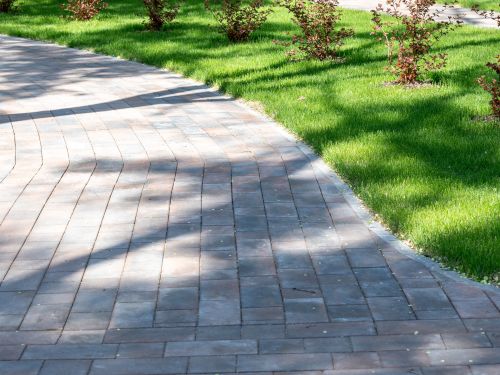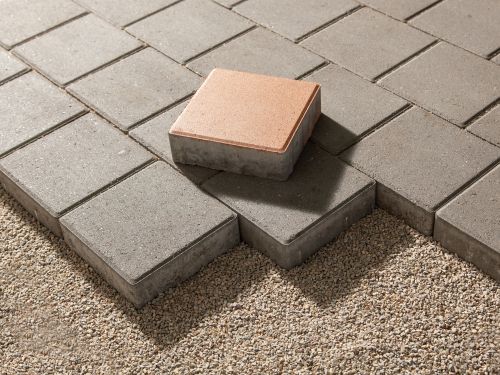Creating an outdoor space that can withstand Arizona’s intense heat requires more than just drought-tolerant plants—it demands heat-resistant hardscaping materials designed to endure extreme temperatures. From patios to walkways and driveways, the right materials can help you beat the heat, reduce maintenance, and keep your outdoor areas comfortable year-round. Let’s explore the best hardscape materials for Arizona heat, their pros and cons, and essential maintenance tips for lasting beauty and performance.

Call Desert Environments Today
Let’s Build Your Desert Oasis
Why Heat-Resistant Hardscaping Matters
Arizona’s desert climate brings months of blazing sun, minimal rainfall, and dramatic temperature swings. Ordinary paving materials can crack, fade, or absorb excessive heat, making outdoor spaces uncomfortable. Heat-resistant hardscaping offers a practical solution—using materials that stay cooler, resist UV damage, and maintain structural integrity even in harsh conditions.
Choosing the Right Materials Doesn’t Just Improve Comfort; It Also:
- Extends the lifespan of your landscape investment
- Reduces surface heat around your home
- Minimizes repairs caused by expansion and contraction
- Improves curb appeal and long-term property value
Top Heat-Resistant Hardscape Materials for Arizona Landscapes
– Decomposed Granite –
A favorite among Arizona homeowners, decomposed granite is a natural, crushed stone that provides a rustic, desert-inspired look. Available in warm tones like gold, tan, and red, DG blends beautifully with native landscaping.
Pros
- Excellent heat reflection—stays cooler underfoot than concrete or asphalt
- Permeable, reducing runoff and erosion
- Low maintenance and cost-effective
- Blends seamlessly with xeriscaping and natural desert designs
Cons
- Can shift or compact unevenly over time
- Requires periodic raking or replenishing
- May become dusty in high-traffic areas
Maintenance Tips
- Add a stabilizer or resin binder to reduce dust and improve durability.
- Rake occasionally to maintain a level surface.
- Reapply fresh granite every few years for color and texture consistency.
– Flagstone –
Flagstone patios and walkways offer timeless elegance and natural heat resistance. Because flagstone absorbs less heat than concrete or brick, it remains comfortable to walk on—even during Arizona’s scorching summers.
Pros
- Naturally cool underfoot and UV-resistant
- Durable and weather-resistant
- Comes in a variety of natural colors and textures
- Adds organic character to outdoor spaces
Cons
- Uneven surfaces can pose challenges for furniture placement
- Requires professional installation for proper fit and leveling
- Joints may need periodic refilling with sand or mortar
Maintenance Tips
- Seal flagstone every 2–3 years to prevent staining and fading.
- Sweep debris regularly to avoid buildup that can cause discoloration.
- Replace joint material as needed to prevent weed growth.
Flagstone works particularly well for pool decks, patios, and garden paths, offering both function and style in desert environments.
– Heat-Tolerant Pavers –
Modern heat-tolerant concrete and clay pavers are engineered to handle Arizona’s temperature extremes without cracking or discoloration. They come in a wide range of colors and finishes, allowing for versatile design options.
Pros
- Designed for high heat and UV resistance
- Easy to repair—individual pavers can be replaced if damaged
- Uniform surface ideal for furniture and foot traffic
- Available in reflective colors that minimize heat absorption
Cons
- Dark-colored pavers can still retain heat
- Requires a stable base to prevent shifting or settling
- Initial installation costs can be higher than gravel or DG
Maintenance Tips
- Use light or neutral colors to reduce surface heat.
- Clean regularly with water and mild detergent to prevent buildup.
- Apply a paver sealant every few years to preserve color and texture.
Pavers are ideal for driveways, courtyards, and patios, providing durability and style that can withstand the Arizona sun.
– Travertine –
For homeowners seeking luxury and comfort, travertine stone is a premium option that stays surprisingly cool to the touch—even in triple-digit temperatures.
Pros
- Naturally cool surface, perfect for pool decks and lounging areas
- Slip-resistant when textured
- Elegant appearance with timeless appeal
Cons
- Higher upfront cost than concrete or granite
- Requires periodic sealing to prevent staining
- Can be damaged by harsh chemicals or acidic cleaners
Maintenance Tips
- Seal annually to protect against moisture and staining.
- Avoid using salt-based pool cleaners near travertine areas.
- Clean with a neutral pH cleaner to preserve its natural luster.
Designing for Heat Management
Beyond material selection, proper design enhances the performance of heat-resistant hardscaping:
- Use Lighter Colors: Reflect more sunlight and reduce surface temperatures.
- Incorporate Shade: Add pergolas, shade sails, or desert-friendly trees to minimize direct exposure.
- Combine Textures: Mix gravel, stone, and pavers for both cooling and visual balance.
- Promote Airflow: Avoid large, unbroken concrete slabs that trap heat.
Thoughtful design and smart material choices can turn your outdoor space into a relaxing retreat—even under the Arizona sun.

